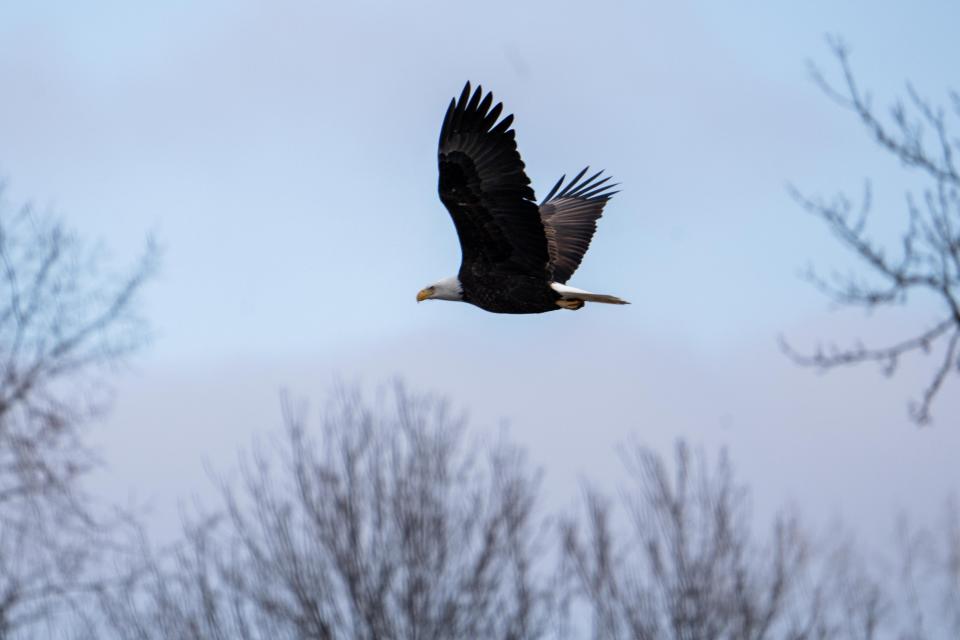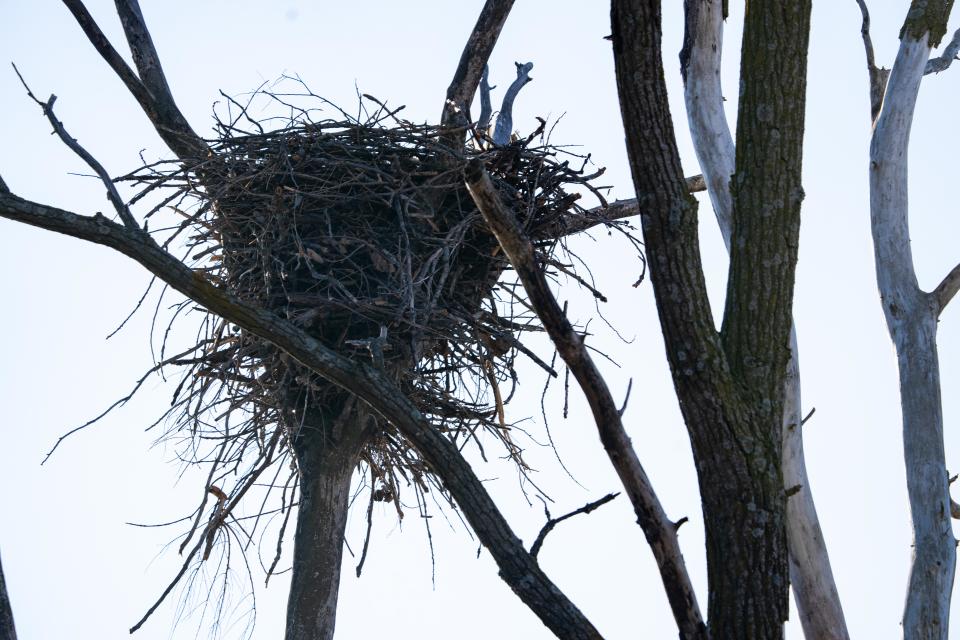Iowa Department of Natural Resources' annual bald eagle count begins. Here's what to know
Seeing a bald eagle in Iowa this winter will be a lot harder than it used to be. Warmer temperatures are keeping the majestic birds farther north, according to the state Department of Natural Resources.
Every year from early- to mid-January, the Iowa DNR conducts the Bald Eagle Midwinter Survey along most of the state's major rivers to monitor the bird's population. The Bald Eagle Nest Monitoring Survey is also conducted.
On Jan. 3, the Register had the chance to tag along on the count with Iowa DNR wildlife management biologist, Josh Gansen to see how many eagles could be found in the Saylorville area.
In the 2023 survey, 2,901 eagles were counted around the state. This year, Gansen expects the number to be lower.
"Weather extremes, warm or cold, bias the results," Gansen said along the route he has followed for the past 12 years since he has conducted the survey with the DNR.

If a winter is too warm, the eagles tend to stay farther north in Minnesota and the Dakotas. If a winter is too cold, they're likely to go farther south.
How many eagles were counted?
On Jan. 3, one bald eagle was sighted along the route Gansen took in the lower levels by the Saylorville Dam. On a normal year, according to Gansen, there would be 30 to 50 seen in the area.
"Generally speaking, on this whole route (Saylorville), if I was to bet money on anywhere that I'm going to see eagles, that's where it's going to be," Gansen said.
But just because the numbers may be lower in Iowa this year doesn't mean the bald eagle population is down, Gansen said.
"It means the bald eagles are, basically, distributed across the whole state more randomly because there's access to food and open water," he said. "Birds from other states may not have migrated here at this point."
Even though only one eagle was spotted on the route, Gansen hopes to see more in the coming weeks of the survey. The eagle count will last until Jan. 17, according to the DNR.
"It's more fun to see a little more activity," he said. "But wildlife never cooperates."

What is the Bald Eagle Midwinter Survey?
Since the late 1980s, the Iowa DNR has conducted a population survey during the first two weeks in January. The purpose is to count the number of bald eagles and their territories around the state. Reproductive success is also a focus of the survey.
The survey was done by the National Wildlife Federation from 1979 until 1992, when the Bureau of Land Management's Raptor Research and Technical Assistance Center assumed responsibility for overseeing the count, according to the Midwinter Bald Eagle count website.
The survey is done in 43 states and is now coordinated by the U.S. Army Corps of Engineers.
"The biggest reason is just to monitor the population," Gansen said. "It's historically started because of the concern when (bald eagles) were listed as an endangered species."
In 2007, the U.S. Fish and Wildlife Service removed the bald eagle from the threatened and endangered species list. Iowa followed suit in 2009, moving it to the status of "special concern."
According to Stephanie Shepherd, a wildlife diversity biologist with the Iowa DNR, in the past 25 years, there has been a dramatic increase in Iowa's bald eagle population and a steady upward population trajectory.
How does the DNR count the eagles?
DNR staff and volunteers survey 52 routes across the entire state. All of the routes are driven by car or truck at a slow speed, and eagles that are spotted are hand counted by the person conducting the survey.
Data on time spent surveying, weather conditions and percentage of ice coverage are also recorded.
The route taken by Gansen with the Register went to various points around Saylorville Lake and the Saylorville Dam.
In 2023, 1,663.5 miles were covered during the surveys, with the average time of 160 minutes to complete the route.
Where's the best place to see a bald eagle?
According to Shepherd, the two rivers in Iowa with the highest recorded numbers and density of eagles are the Des Moines River and the Mississippi River.
Even though warmer temperatures may be keeping the eagles farther north, you can still see eagles at these rivers and other major rivers across the state.
You can also spot bald eagle nests in these areas, characterized by their large size.
"You're not going to mistake it for a hawk's nest," Gansen said. "It looks like a Volkswagen Beetle made of sticks up in the trees."
Kyle Werner is a reporter for the Register. Reach him at kwerner@dmreg.com
This article originally appeared on Des Moines Register: Iowa Department of Natural Resources begins annual bald eagle count

